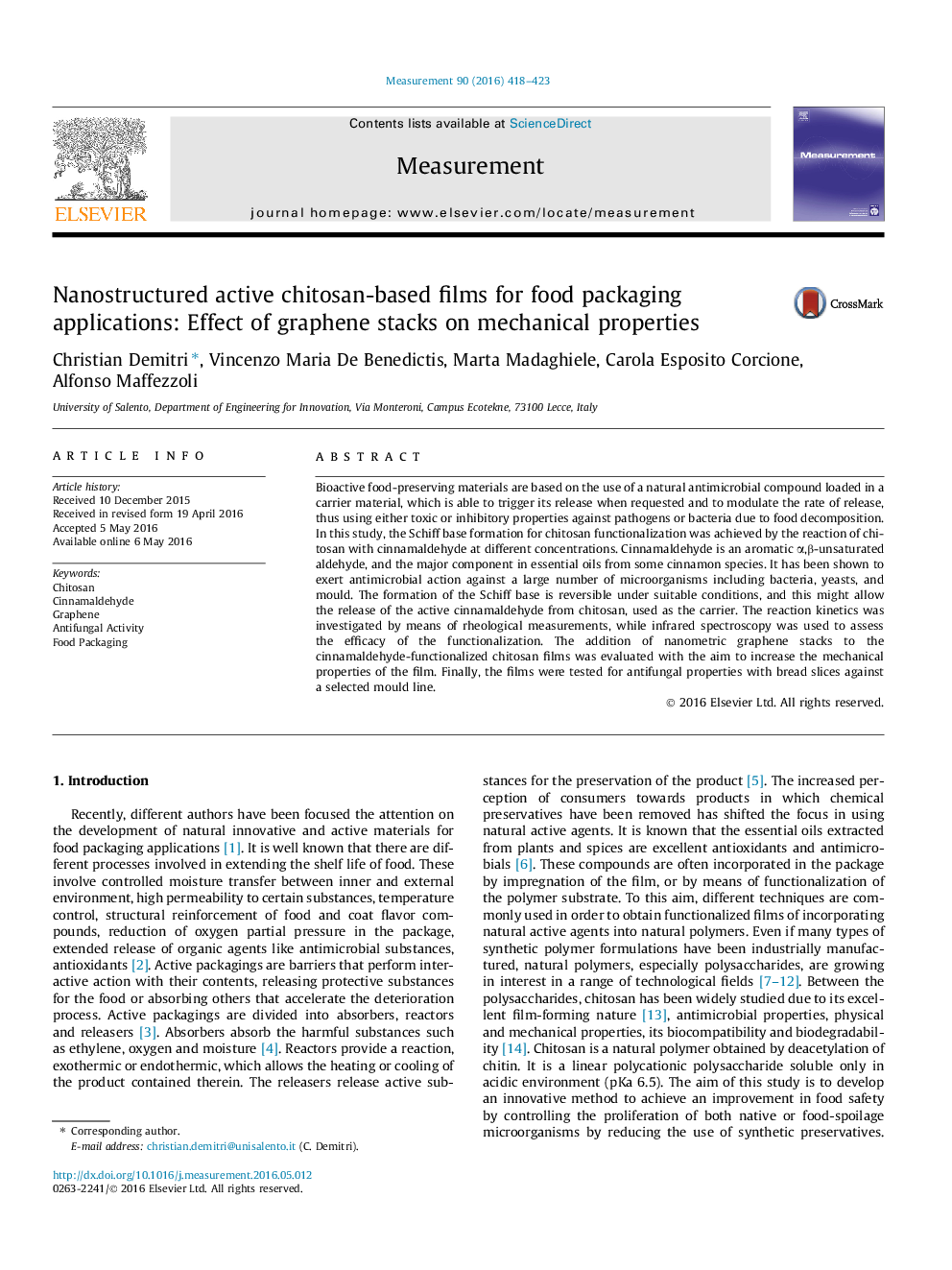| Article ID | Journal | Published Year | Pages | File Type |
|---|---|---|---|---|
| 7123605 | Measurement | 2016 | 6 Pages |
Abstract
Bioactive food-preserving materials are based on the use of a natural antimicrobial compound loaded in a carrier material, which is able to trigger its release when requested and to modulate the rate of release, thus using either toxic or inhibitory properties against pathogens or bacteria due to food decomposition. In this study, the Schiff base formation for chitosan functionalization was achieved by the reaction of chitosan with cinnamaldehyde at different concentrations. Cinnamaldehyde is an aromatic α,β-unsaturated aldehyde, and the major component in essential oils from some cinnamon species. It has been shown to exert antimicrobial action against a large number of microorganisms including bacteria, yeasts, and mould. The formation of the Schiff base is reversible under suitable conditions, and this might allow the release of the active cinnamaldehyde from chitosan, used as the carrier. The reaction kinetics was investigated by means of rheological measurements, while infrared spectroscopy was used to assess the efficacy of the functionalization. The addition of nanometric graphene stacks to the cinnamaldehyde-functionalized chitosan films was evaluated with the aim to increase the mechanical properties of the film. Finally, the films were tested for antifungal properties with bread slices against a selected mould line.
Related Topics
Physical Sciences and Engineering
Engineering
Control and Systems Engineering
Authors
Christian Demitri, Vincenzo Maria De Benedictis, Marta Madaghiele, Carola Esposito Corcione, Alfonso Maffezzoli,
